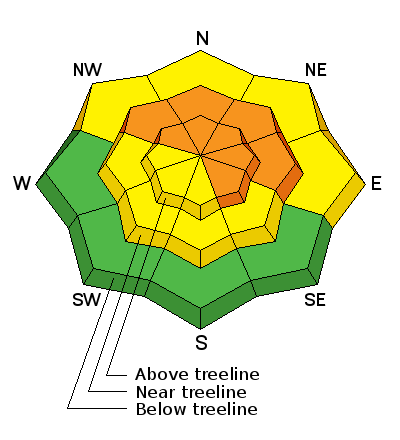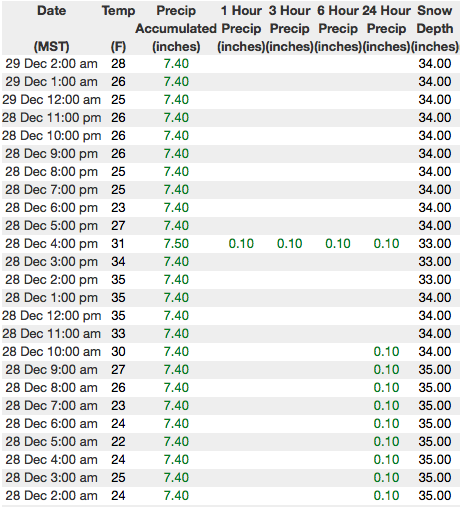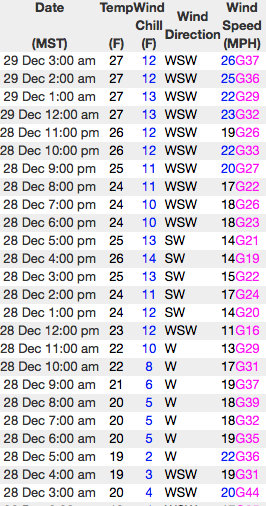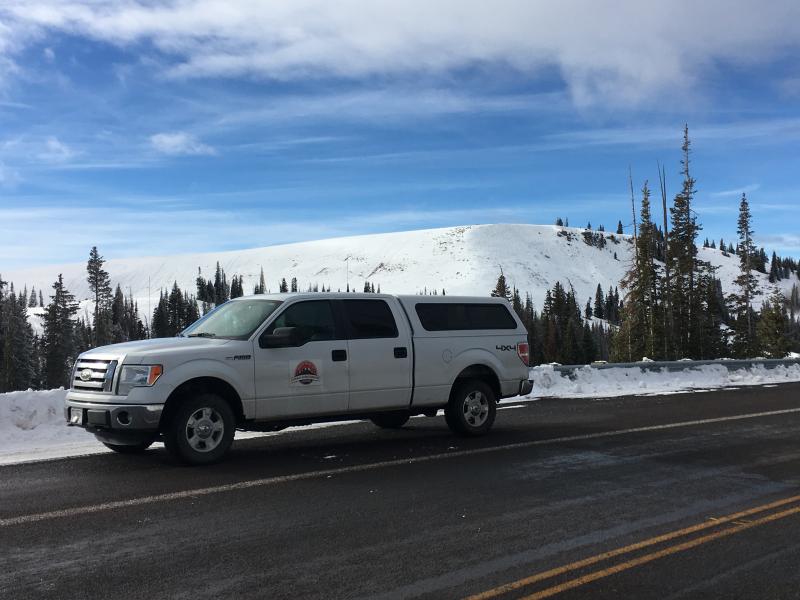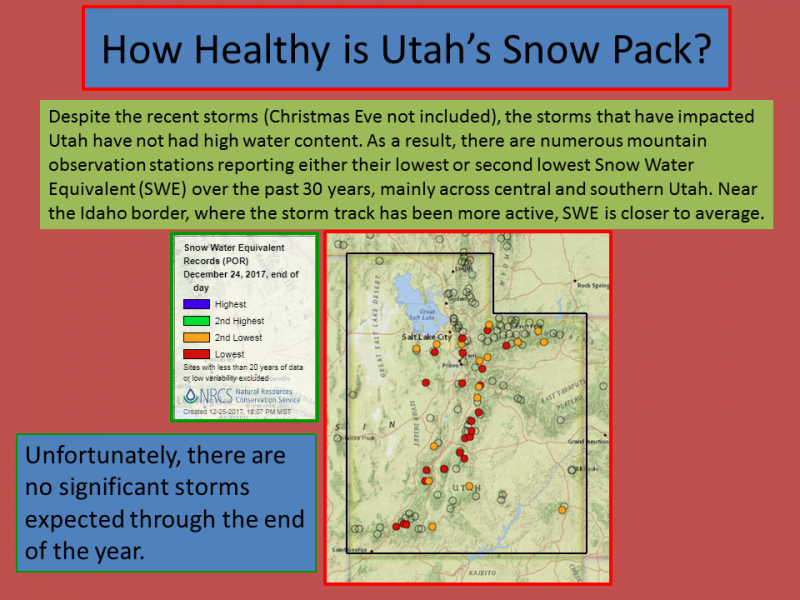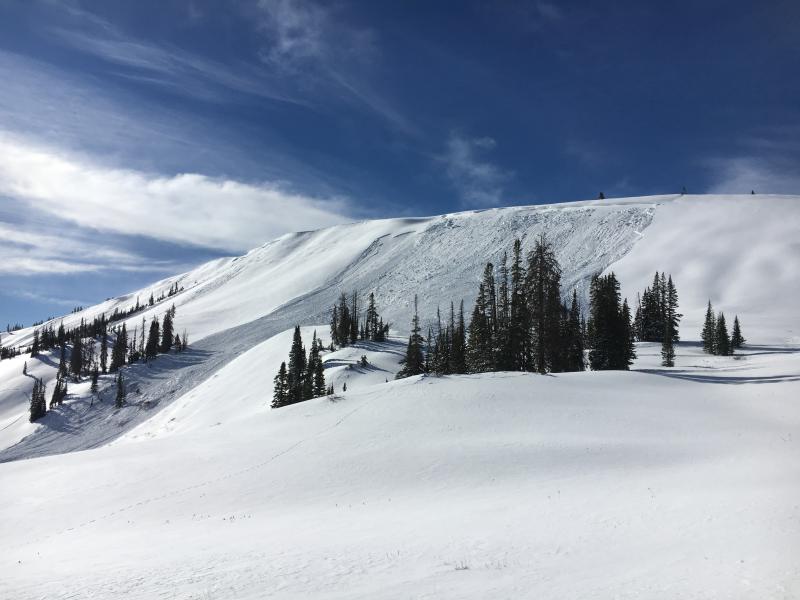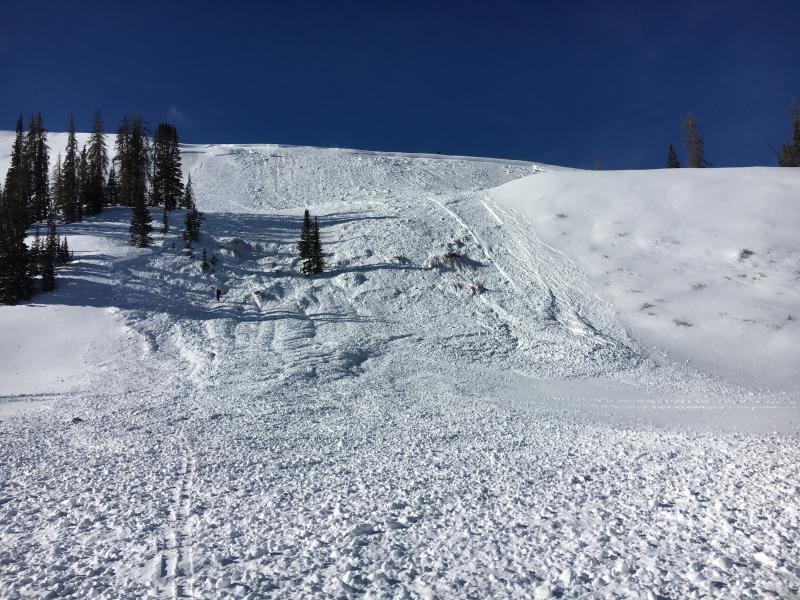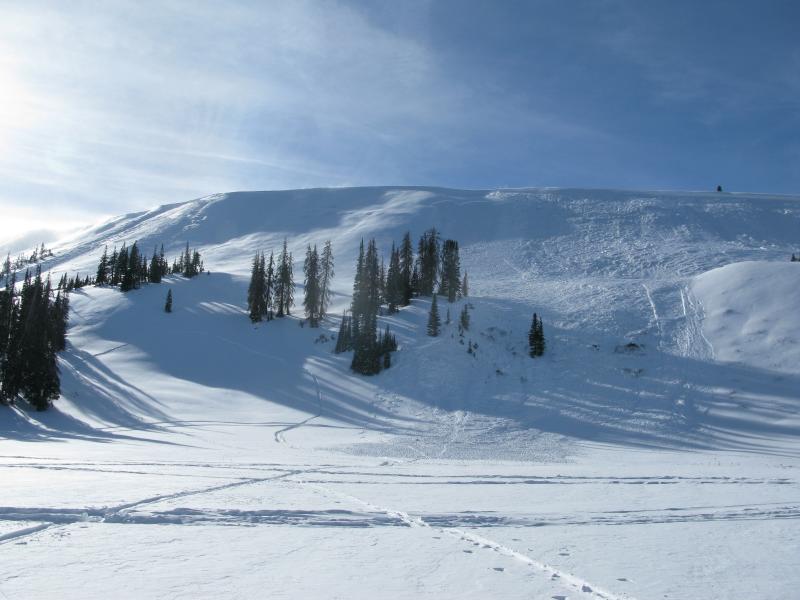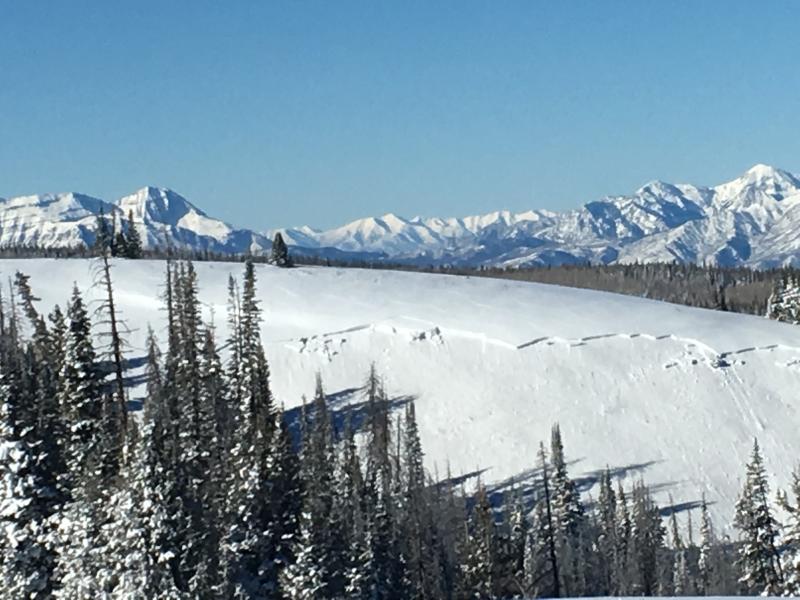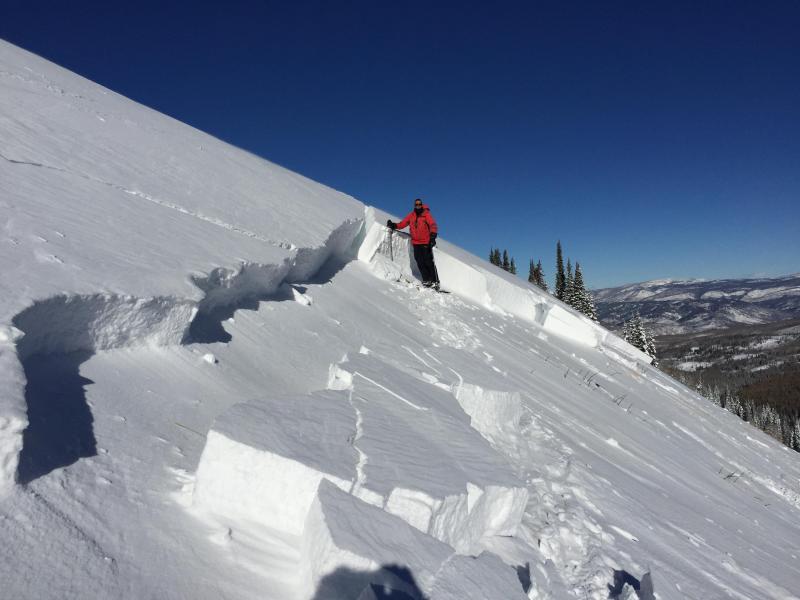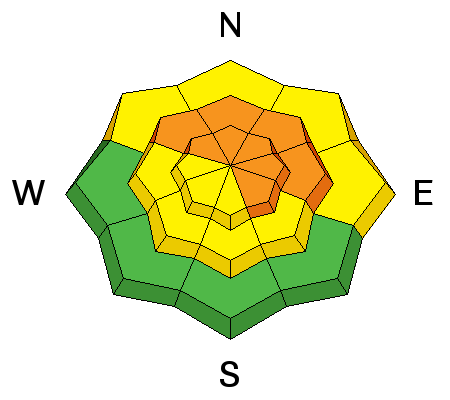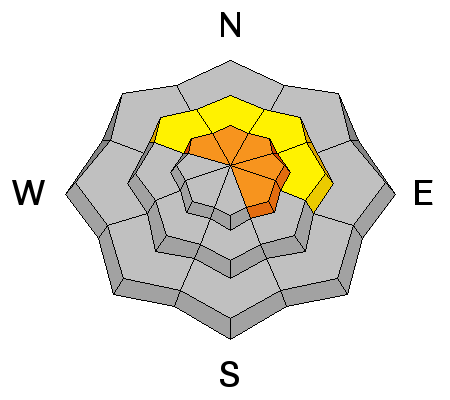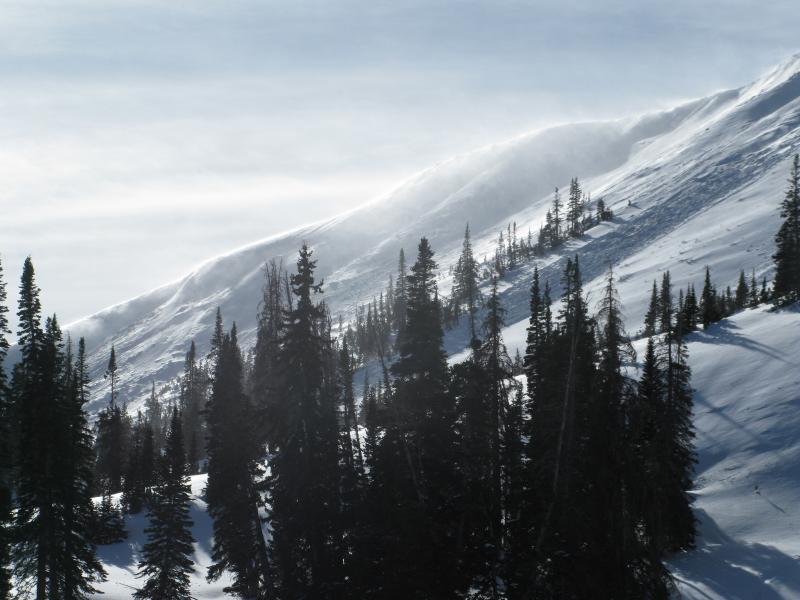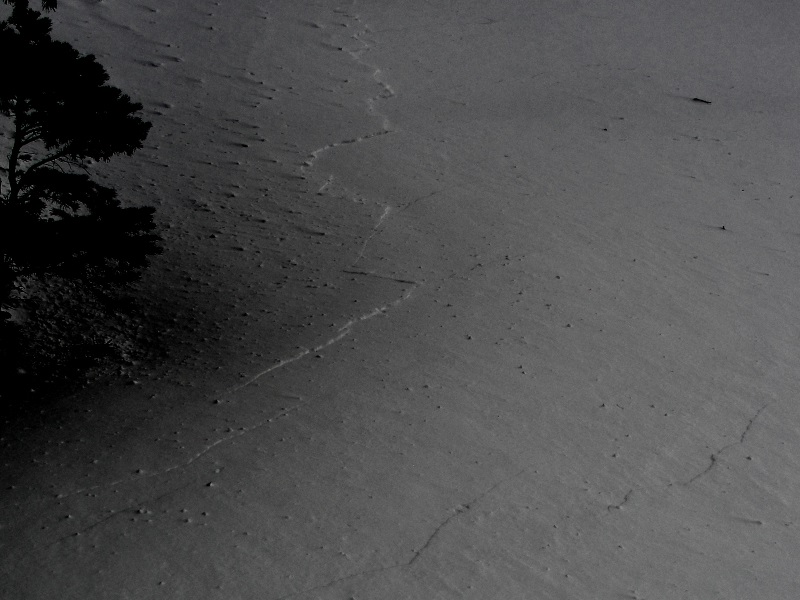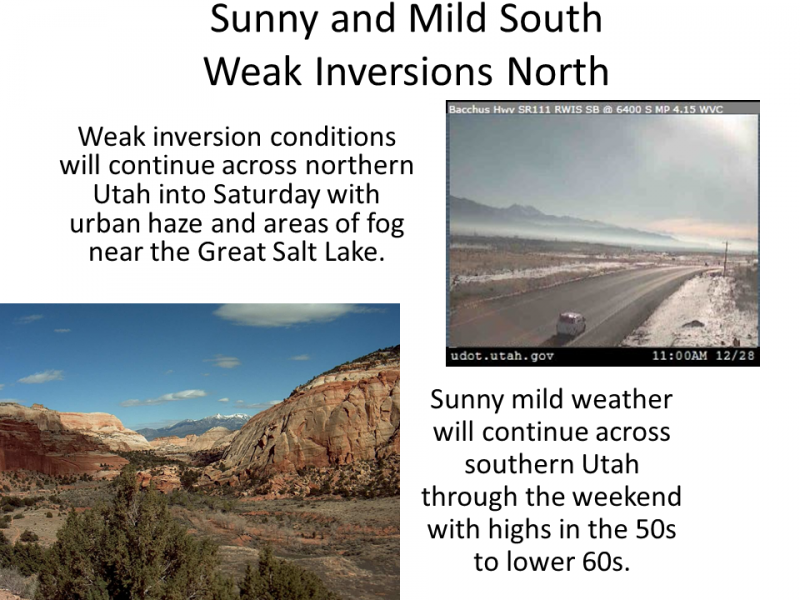We have an unusual snowpack structure for the western Uinta's right now... it's not our usual weak mess of sugary snow that feels like a sandbox. On the contrary, it's actually comprised of a complex mix of crusts and fragile, sugary facets sandwiched in between. This gives the snowpack some body and allows us to ride without submarining to the ground. All was good and the snowpack comfortable in its own skin until the Christmas storm rolled around and laid down a dense, cohesive slab. So now we have all the ingredients for an avalanche- a slab, a weak layer, and an unusual bed surface. Adding another twist that's out of the ordinary... our bed surface is a raincrust formed on Thanksgiving. That combo is connecting the slab across the slope and the slick bed surface provides little in the way of resistance, allowing avalanches to run much further and faster than you might expect.
So, that's the science behind how we make the sausage. What this means for us is... the snowpack has some strength, but because of its structure (strong snow on weak snow) it offers little in the way of stability. Now I'm no scientist, so I'm gonna rely on the biggest clue to avalanches and that's avalanches. As a matter of fact, recent avalanches and close calls suggest the snowpack remains weak. Now here's the catch... it's tricky because it's not in your face. You don't look around and see widespread natural avalanches everywhere. Right now most slopes just need a trigger like us to come along and knock the legs out from underneath it. All this doesn't mean you can't ride. It does mean we simply need to allow the snowpack to heal and settle out.
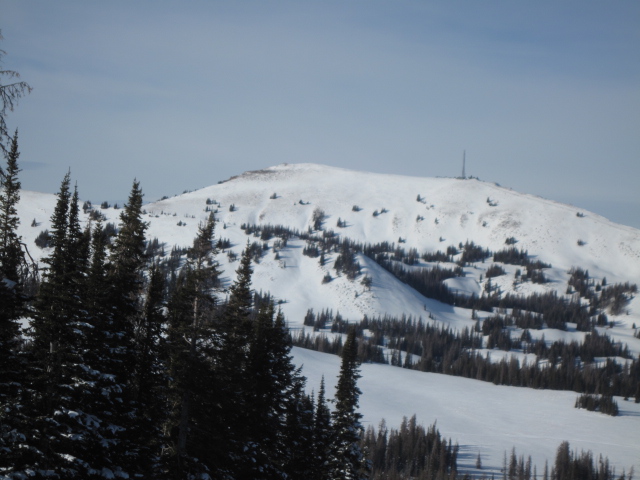
The best strategy is easy... it's avoidance. Simply avoid being on or underneath steep, wind drifted slopes facing the north half fo the compass. Remember- there are plenty of south facing slopes throughout the range, like the one pictured above, where you can ride and you don't even have to deal with this issue.

